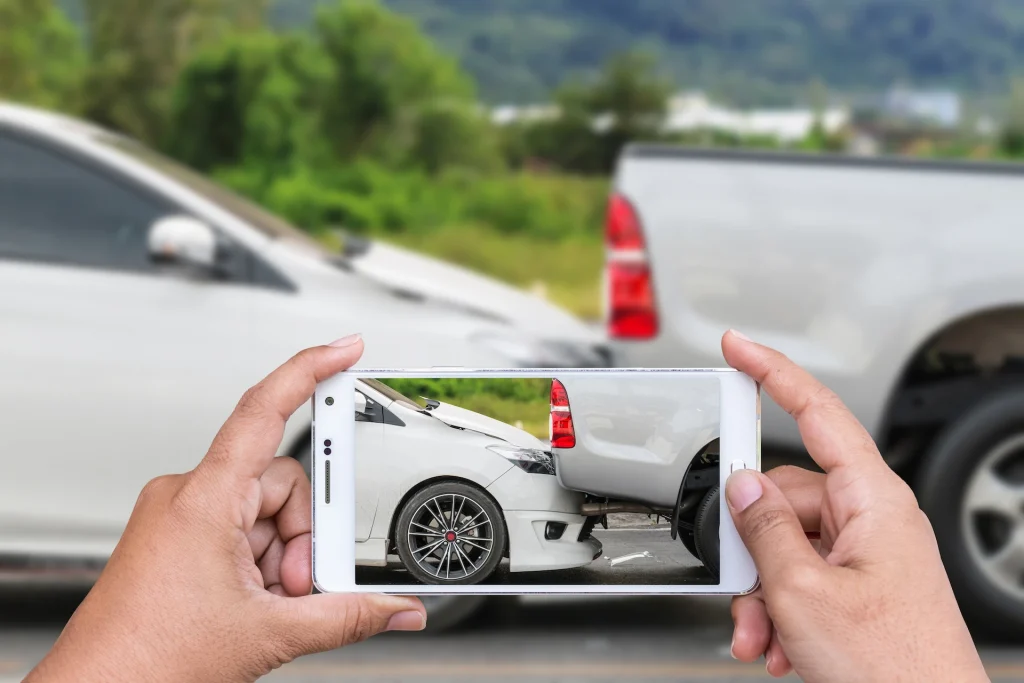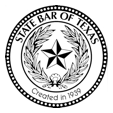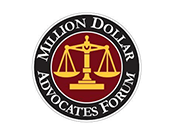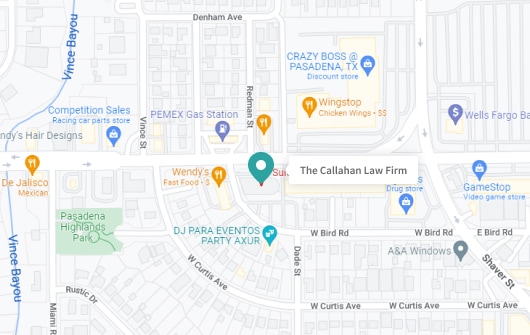Who Is at Fault in a Multiple Rear-End Collision in Texas?

In the chaos of a multi-car accident, determining who is at fault in a multiple rear-end collision in Texas becomes a complex task that requires thorough investigation and an understanding of Texas car accident laws.
If you find yourself overwhelmed by the legal challenges following such an incident, consider reaching out to The Callahan Law Firm. We can provide the support and clarity needed to navigate through these difficult times and help ensure that your rights are protected. Contact us today to schedule your no-cost initial consultation.
Understanding Fault in Multi-Car Accidents
In multi-car accidents, determining fault involves understanding the legal concept of negligence. Negligence is the failure to take reasonable care to avoid causing injury or loss to another person. Here are the elements that must be proven to show negligence:
- Duty: This is the foundational element of negligence, where you must show that the driver owes a duty of care to others on the road. This duty is inherent for all people operating vehicles on Texas roadways and involves maintaining a reasonable standard of behavior to avoid harming others, such as obeying traffic laws and paying attention while driving.
- Breach of Duty: A breach occurs when a driver fails to fulfill their duty of care. Examples include speeding, running a red light, or driving under the influence of alcohol or drugs. In
- Causation: This element links the breach of duty directly to the accident. It must be shown that the breach was the proximate cause of the accident. This means the accident would not have occurred if not for the negligent behavior and that it is reasonably foreseeable that the negligent behavior could cause a crash.
- Damages: Finally, it must be demonstrated that actual damages resulted from the accident. This can include physical injuries to individuals, damage to vehicles or property, and other financial losses resulting from the accident.
Each of these elements must be proven for a driver to be found negligent and, therefore, at fault in a traffic accident. This framework is essential in legal proceedings for assessing responsibility and compensating those harmed in multi-car accidents.
Factors to Consider in Multi-car Collisions
When evaluating multi-car collisions, several critical factors must be taken into account to assign fault and determine liability accurately. These factors include:
- The Sequence of Events Leading to the Collision: Understanding the exact sequence of events is pivotal. This involves identifying how the collision started, the actions of each driver during and after the incident, and the resulting consequences. Accurate reconstruction of the event often requires eyewitness testimony, surveillance footage, and expert analysis.
- Multiple Drivers’ Negligence and Their Shares of Fault: In multi-car collisions, more than one driver can be negligent. Determining each driver’s share of fault involves assessing their actions against the standard of reasonable care. This analysis is guided by factors such as speeding, failure to obey traffic signals, distracted driving, not maintaining a safe distance between vehicles, and improper vehicle maintenance.
- Potential Liability of Third Parties: In addition to the drivers directly involved, third parties may also hold liability. This could include vehicle manufacturers in cases where defective parts contributed to the accident and mechanics if recent vehicle repairs were improperly conducted and played a role in the collision. Identifying these factors can complicate fault determination but is essential for a thorough resolution of the case.
Considering these factors ensures a comprehensive evaluation of liability and fault in complex multi-car accidents.
The Role of Police Reports in Establishing Fault
Police reports play a crucial role in the process of establishing fault in traffic accidents, including multi-car collisions. Here’s how these reports contribute to determining fault:
- Immediate Documentation: Police reports are created a police officer who was at the scene of the accident, capturing details while they are fresh. This immediate documentation may include vehicle positions, skid marks, road conditions, and any signs of violations like speeding or running a red light.
- Witness Statements: Officers collect statements from drivers, passengers, and bystanders. These accounts are critical in reconstructing the sequence of events and can provide insight into the behavior of drivers before the collision.
- Officer Observations: The responding officers often make their own observations regarding signs of impairment, the damage to vehicles, and the general demeanor of all involved. They might note if a driver admits to distractions or appears intoxicated.
- Citations and Violations: If the police determine that traffic laws were violated, they may issue citations at the scene. These violations can be a strong indicator of fault, particularly if a driver’s illegal action directly led to the accident.
- Neutral Perspective: Unlike witness or victim statements that may be biased, a police report is generally regarded as a neutral and reliable source. As such, it can carry significant weight in legal and insurance proceedings.
But remember, while police reports are influential, they are not the final word on fault. They can be contested and supplemented with additional evidence like camera footage, expert testimony, and further investigation. Lawyers often use the information in the police report as a foundation for building a case but will seek to corroborate and elaborate on the details through further discovery.
Comparative Fault Rule and its Implications in Texas
In Texas, the legal framework for resolving claims where multiple parties may be at fault involves the concepts of modified comparative negligence and joint and several liability. Understanding these can be crucial for anyone involved in a legal dispute following an accident. Here’s how each works and affects the injured party:
Modified Comparative Negligence
This rule affects the injured party by reducing their ability to recover damages if they are found partially at fault for the incident. In Texas, if an injured party is found to be 51% or more at fault, they are barred from recovering any damages.
If the injured party is less than 51% at fault, their compensation will be reduced by their percentage of fault. For example, if a party is found to be 30% at fault and the total damages amount to $100,000, they can only recover 70% of the damages, which would be $70,000.
Joint and Several Liability
Texas applies a modified form of joint and several liability as well. This rule allows a plaintiff to recover the full amount of damages from any defendant who is more than 50% at fault. If a defendant is found to be 50% or less at fault, they are only responsible for the percentage of damages equal to their degree of fault, unless specific exceptions apply.
For instance, if one defendant is responsible for 60% of the fault and another 40%, the first can be held responsible for the entire judgment amount, allowing the injured party to seek full recovery from them if the second defendant is unable to pay.
Determining Fault and Insurance Claims
Determining fault in multiple-car rear-end collisions involves a careful assessment of each driver’s actions and analyzing how these contributed to the accident. This includes examining the initial impact and any subsequent chain reactions, as well as external contributing factors like weather conditions and road hazards.
When it comes to dealing with insurance claims in such complex scenarios, it’s important to understand the challenges posed by multiple claims and potential issues with policy limits. Ensuring adequate coverage is essential, and the roles of uninsured/underinsured motorist coverage and personal injury protection (PIP) coverage become essential to safeguard against possible financial burdens.
Seeking Legal Assistance
Retaining an experienced personal injury lawyer is highly recommended when pursuing compensation after a multi-car rear-end collision. Legal representation is critical for several reasons:
- Knowledge of the Law: Lawyers have in-depth knowledge of personal injury laws and legal procedures. They can handle the complicated process so you can focus on recovery.
- Thorough Investigation: An experienced lawyer will conduct a thorough investigation into the accident. They will gather police reports, eyewitness statements, video surveillance footage, and other evidence when available to build a strong case proving fault.
- Negotiate With Insurance Companies: Lawyers can act as skillful negotiators when dealing with insurance companies after an accident. They fight to get the maximum compensation you deserve. Without legal representation, insurers are likely to make unreasonably low settlement offers.
- Represent You at Trial: If a fair settlement cannot be reached through negotiation, a lawyer can file a lawsuit on your behalf and represent you in court. Their litigation experience gives you the best chance of a favorable outcome.
- Contingency Fee Basis: Many lawyers work on a contingency fee basis in personal injury cases, so you don’t pay unless they secure compensation for you. This makes hiring legal representation affordable.
The bottom line is a knowledgeable personal injury attorney plays a crucial role in establishing fault in a multi-vehicle accident. They build a compelling case that proves negligence and maximizes the damages you are entitled to.

Contact The Callahan Law Firm Today For Help With a Multi-Car Accident
The aftermath of a multi-car accident can be overwhelming, especially when trying to determine who is at fault and pursue fair compensation. An experienced personal injury attorney can help protect your rights and interests.
The Callahan Law Firm has successfully represented clients in complex multi-car accident cases for over 25 years. Our team of dedicated lawyers will thoroughly investigate your accident, build a strong case to establish fault, and aggressively negotiate with insurance companies on your behalf.
Our experienced team will handle every aspect of your case with compassion and dedication. Contact us today to schedule a no-cost consultation with a Houston car accident lawyer.
FAQ:
Who is at fault in a 3-car rear-end collision in Texas?
Typically, the driver who initiated the chain reaction (usually the last car in line) is considered at fault, but each case is assessed individually to account for the actions of all drivers involved.
Who is at fault in a 4-car rear-end collision in Texas?
As with three-car collisions, fault generally lies with the driver who caused the initial impact at the end of the line. However, other drivers could share responsibility if their actions contributed to the severity of the accident.
Am I at fault if I hit a car in front of me because he slammed on his brakes very suddenly?
Generally, yes. Texas law expects drivers to maintain a safe following distance to handle sudden stops. However, there could be exceptions if the front driver’s actions were deemed unsafe or erratic.
Is Texas a no-fault state for car accidents?
No, Texas is not a no-fault state. Texas uses a fault-based system, meaning the driver who is found to be responsible for causing the accident is liable for the damages.

Michael S Callahan is an attorney and founder of The Callahan Law Firm. He focuses his practice on representing individuals and families in personal injury cases involving motor vehicle and truck accidents, workplace accidents and defective products. With over 25 years of experience, he is dedicated to fighting on behalf of people whose lives have been forever altered by the negligence and carelessness of corporations and individuals. Originally trained as a mechanical engineer, Michael has been practicing law and fighting for justice for those who need it most since 1994. He is board-certified in Personal Injury Trial Law by the Texas Board of Legal Specialization and a member of various esteemed legal associations. Outside of work, Michael enjoys spending quality time with his family, outdoor activities, and continually striving to improve as a trial lawyer and human being.











